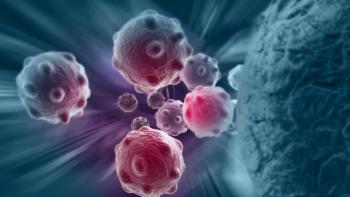
Primary Hemostasis and Bleeding in Preterm Neonates with Thrombocytopenia
These study findings indicated that primary hemostasis and bleeding are dynamic and more interdependent than platelet counts and bleeding in extremely preterm neonates with thrombocytopenia.
A study published in JAMA Network Open found an association between changes in bleeding scores and changes in closure times in response to adenosine diphosphate (CT-ADP), but not platelet counts.
These findings suggest that primary hemostasis and bleeding are dynamic and more interdependent than platelet counts and bleeding in extremely preterm neonates with thrombocytopenia.
This study, titled the Neonatal Hemorrhagic Risk Assessment in Thrombocytopenia Study, was a prospective longitudinal study conducted in 2 neonatal intensive care units at the Karolinska University Hospital and Levine Children’s Hospital. A total of 76 neonates were enrolled in the study, with patients being eligible if they were less than 32 weeks’ gestation or weighed less than 1500 grams at birth, had a PC less than 100 × 103/μL (to convert to ×109/L, multiply by 1.0), and had written informed consent from a parent or guardian.
“Ordinal multinomial logistic regression was used to quantify the association of (bleeding scores) (grouped 0-1, 2, and 3-4) with the prior day’s CT-ADP. To assess the association of 1-day changes in (bleeding scores), CT-ADP, and (platelet counts) with incident transfusion, we used linear regression and correlation,” the authors wrote. “All analyses were conducted in SAS version 9.4 (SAS Institute), and we used repeated-measures models to account for within-patient covariance. Statistical significance was set at P < 0.05, and all tests were 2-tailed.”
Of the 54 evaluable patients with gestational age less than 27 weeks, a longer CT-ADP was correlated with a higher probability of grade 2 to grade 4 bleeding the following day. This rose from 10% after minimum CT-ADP (0 seconds) to 40% after maximum CT-ADP (300 seconds). Each 60-second increment in CT-ADP was also associated with greater odds of higher bleeding scores the next day (odds ratio, 1.42; 95% CI, 1.01-2.00; P = 0.04), however adjustment for platelet counts reduced the anticipated effect size (odds ratio, 1.33; 95% CI, 0.96-1.87; P = 0.09).
Moreover, changes in CT-ADP were strongly associated with changes in bleeding scores (r = 0.33; P = 0.008), though changes in platelet counts were not (r = -0.01; P = 0.93). In regression analyses, changes in CT-ADP were correlated with bleeding score changes, with a 0.24-point (95% CI, 0.12-0.37 points) increase in bleeding score observed per 60-second increase in CT-ADP (P < 0.001).
“This association was unaffected by adjustment for (platelet count) changes (0.26-point [95% CI, 0.12-0.40 points] increase in [bleeding score] per 60-second increase in CT-ADP; P < 0.001) or transfusions (0.25-point [95% CI, 0.12-0.37 points] increase in [bleeding score] per 60-second increase in CT-ADP; P < 0.001),” the authors wrote.
Overall, 17 patents (31.5%) were given 21 platelet transfusions with a mean (SD) platelet count of 49 (21) × 103/μL. These individuals demonstrated significant 1-day increases in platelet counts (mean [SD] change, 31 [9]; P = .002) and decreases in CT-ADP (mean [SE] change, −51 [22]; P = .03) but no significant difference in bleeding score. In addition, fresh frozen plasma (9 transfusions given to 8 infants [14.8%]) or erythrocyte transfusions were not associated with CT-ADP or changes in bleeding score.
“Platelet transfusions given at the thresholds used in this study increased (platelet counts) but did not reduce (bleeding scores). This was consistent with the Platelet Transfusion Thresholds in Premature Neonates (PlaNeT-2) study, in which (platelet transfusions) for (platelet counts) less 50×10/μL did not reduce bleeding,” the authors wrote. “Together, these findings
suggest that when (platelet counts) are not extremely low, other factors could be contributors to bleeding in neonates with thrombocytopenia, although the (platelet count) threshold below which a (platelet transfusion) reduces bleeding is unknown.”
Notably, this study was limited by the small number of infants with platelet counts less than 50 × 103/μL due to transfusion practices in the studied intensive care units and the relatively small number of the more clinically relevant bleeding grades (i.e. 3-4).
Given the collective findings of the Neonatal Hemorrhagic Risk Assessment in Thrombocytopenia Study, the investigators suggested that implementing CT-ADP or other measures of primary hemostasis in clinical practice could lead to novel approaches in managing thrombocytopenia for preterm neonates.
Reference:
Deschmann E, Saxonhouse MA, Feldman HA, Norman M, Barbian M, Sola-Visner M. Association of Bleeding Scores and Platelet Transfusions With Platelet Counts and Closure Times in Response to Adenosine Diphosphate (CT-ADPs) Among Preterm Neonates With Thrombocytopenia. JAMA Network Open. doi:10.1001/jamanetworkopen.2020.3394.
Newsletter
Stay up to date on recent advances in the multidisciplinary approach to cancer.

















































































